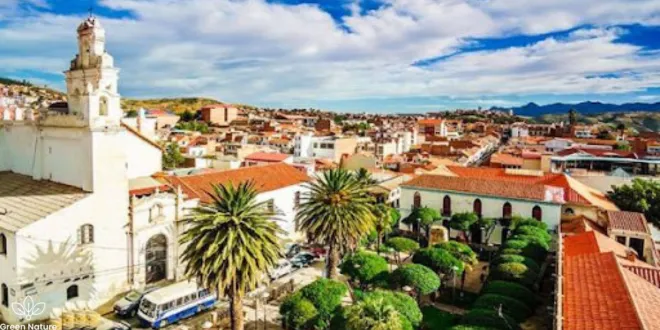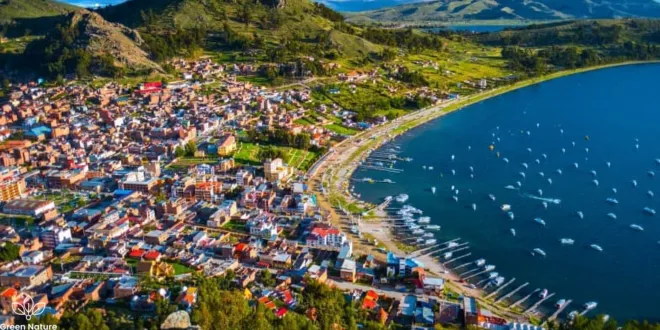Bolivia is one of South America’s most breathtaking and underrated travel destinations, offering a surreal blend of landscapes, cultures, and unforgettable adventures. From the vast, mirror-like Salar de Uyuni to the otherworldly colors of Laguna Colorada, this country captivates visitors with its raw natural beauty and rich heritage.
Whether you’re an adventurous backpacker, a nature enthusiast, or a culture lover, Bolivia has something extraordinary waiting for you. In this guide, we’ll explore the best places to visit in Bolivia, including must-see attractions, hidden gems, and practical tips to help you make the most of your journey.

Salar de Uyuni: The World’s Largest Salt Flat
Salar de Uyuni is Bolivia’s most iconic and surreal destination. Spanning over 10,000 square kilometers, this vast white expanse creates a dreamlike scene, especially after rain when a thin layer of water turns it into a giant mirror reflecting the sky. It’s a paradise for photographers and adventurers alike. During the dry season, you can walk or drive across the salt crust, visit Isla Incahuasi with its giant cacti, and stay in salt hotels.
Whether you’re watching a golden sunset or stargazing under the clearest skies imaginable, Salar de Uyuni offers an experience that feels like stepping onto another planet.
Absolutely! Here’s a subheading and a short description using the keyword “best places to visit in Bolivia”:
Unveiling the Best Places to Visit in Bolivia
Bolivia is a land of contrasts—towering mountains, mirror-like salt flats, vibrant cities, and untouched jungles. In this section, we explore the best places to visit in Bolivia, each offering a unique glimpse into the country’s natural beauty, cultural depth, and adventurous spirit. Whether you’re planning your first trip or looking to go off the beaten path, these destinations are sure to leave a lasting impression.
La Paz: The World’s Highest Capital City
Sitting at around 3,650 meters (nearly 12,000 feet) above sea level, La Paz is a city of contrasts—colorful markets, steep streets, colonial architecture, and a buzzing modern edge. One of the city’s highlights is the Mi Teleférico cable car system, which offers incredible views of the sprawling valley and the snow-capped Mount Illimani.
Don’t miss the Witches’ Market (Mercado de las Brujas) for traditional remedies and local curiosities, or the Valley of the Moon for dramatic eroded rock formations just outside the city. La Paz is also a great base for day trips to sites like Tiwanaku or the Death Road adventure.
Lake Titicaca: Sacred Waters of the Andes
Shared with neighboring Peru, Lake Titicaca is the highest navigable lake in the world and a place deeply rooted in Andean mythology. In Bolivian territory, the lakeside town of Copacabana offers peaceful views, charming churches, and access to Isla del Sol—believed to be the birthplace of the Inca civilization.
The island features scenic hikes, ancient ruins, and traditional villages with no motorized vehicles. Whether you’re soaking in the spiritual atmosphere, enjoying a boat ride, or hiking along Inca trails, Lake Titicaca provides a unique combination of nature and culture.
Sucre: Bolivia’s White City and Cultural Capital
Known for its beautiful white-washed buildings and pleasant climate, Sucre is considered Bolivia’s constitutional capital and one of its most picturesque cities. A UNESCO World Heritage Site, Sucre offers a relaxed pace and a deep sense of history.
Visit the historic Casa de la Libertad where Bolivia’s independence was declared, or stroll through Plaza 25 de Mayo, surrounded by colonial-era architecture. Sucre is also home to several museums, and nearby attractions include the famous Cal Orcko dinosaur tracks. It’s the perfect place to learn Spanish, enjoy local food, and soak in Bolivian culture.

Potosí: The Historic Silver Mine City
Once one of the richest cities in the world due to its immense silver reserves, Potosí is a haunting reminder of colonial exploitation and industrial ambition. Set at over 4,000 meters above sea level, it’s one of the highest cities on earth. The main attraction here is Cerro Rico (“Rich Mountain”), which you can tour to see the working conditions inside the mines—a sobering but eye-opening experience.
The city itself has preserved much of its colonial charm, with beautiful churches, cobbled streets, and the excellent National Mint Museum (Casa de la Moneda), showcasing its mining legacy.
Laguna Colorada & Laguna Verde: Bolivia’s Colorful Lakes
Located in the remote Eduardo Avaroa Andean Fauna National Reserve, these two high-altitude lakes are among Bolivia’s most astonishing natural wonders. Laguna Colorada stuns visitors with its reddish hue, caused by algae and sediments, and is often dotted with flamingos. Nearby, Laguna Verde offers a vivid green tint due to mineral deposits and sits at the base of the Licancabur volcano.
The region also features geysers, hot springs, and bizarre rock formations, all set against a backdrop of the high Andean plateau. It’s remote, rugged, and absolutely unforgettable.
Madidi National Park: A Biodiversity Hotspot
For nature lovers and eco-adventurers, Madidi National Park in northern Bolivia is a dream destination. Stretching from Andean mountains to Amazonian jungle, it’s considered one of the most biodiverse places on Earth. The park is home to thousands of plant and animal species, including monkeys, jaguars, macaws, and pink river dolphins.
You can explore the park through guided jungle treks, boat rides, and eco-lodges run by local communities. Visiting Madidi is not just an immersion in nature—it’s also a chance to support conservation and sustainable tourism.
Cochabamba: The Heart of Bolivia’s Culinary Scene
Cochabamba, located in the center of the country, is often referred to as Bolivia’s gastronomic capital. Thanks to its fertile valleys and year-round mild climate, the city boasts an abundance of fresh produce and traditional dishes. Try salteñas (Bolivian empanadas), silpancho (a local meat-and-rice dish), and chicha (a fermented corn drink).
Beyond the food, Cochabamba offers lively markets, a huge Christ statue even taller than Rio’s, and easy access to nearby nature spots like Tunari National Park. It’s a vibrant, welcoming city with a strong local identity.

The Yungas Road: From Andean Peaks to Jungle Trails
Also known as the “Death Road,” the Yungas Road offers a thrilling descent from the cold, high-altitude Andes into the lush, subtropical forests of the Yungas region. While its nickname may sound ominous, the route is now a popular biking trail for adrenaline seekers and offers jaw-dropping views the entire way. Riders pass waterfalls, cliffside drops, and cloud forests.
At the end, you’re rewarded with warmer temperatures, jungle scenery, and the chance to relax in the small town of Coroico—a perfect contrast to the mountain climate of La Paz.
Tarija: Bolivia’s Wine Country
Set in the southern valleys near the border with Argentina, Tarija is Bolivia’s wine-growing region, famous for its sweet and high-altitude wines, especially Muscat of Alexandria and the potent local spirit, Singani. Tour scenic vineyards, sample local vintages, and enjoy the slow-paced lifestyle of this charming town.
With its mild climate, leafy plazas, and friendly locals, Tarija is a great stop for foodies and wine lovers looking to unwind and enjoy a different side of Bolivia.

Final words
From the mirror-like salt flats of Uyuni to the colorful lakes of the high Andes and the lush jungles of Madidi, Bolivia is a country packed with breathtaking landscapes and rich cultural experiences. Whether you’re exploring historic cities, tasting local cuisine, or trekking through remote wilderness, every corner of this diverse nation offers something unforgettable.
For travelers seeking raw beauty, authenticity, and adventure, these truly are the best places to visit in Bolivia—a destination that surprises, inspires, and stays with you long after you’ve left.
Frequently Asked Questions
1. What is the best time to visit Bolivia?
The best time to visit is during the dry season, from May to October, when weather is more stable and ideal for travel, especially to places like Uyuni and the Andes.
2. Is Bolivia safe for tourists?
Yes, Bolivia is generally safe for travelers, but like anywhere, you should stay aware of your surroundings and take normal precautions, especially in crowded areas.
3. Do I need a visa to travel to Bolivia?
Visa requirements vary by country. Many travelers from the EU and most South American countries don’t need a visa, but U.S. citizens do. Always check the latest entry requirements before traveling.
4. How do I get to Salar de Uyuni?
You can reach Uyuni by flying from La Paz or taking a bus/train. Most people join a multi-day tour from Uyuni town to explore the salt flats and surrounding attractions.
5. What is Bolivia famous for?
Bolivia is known for its stunning natural landscapes, including salt flats, high-altitude lakes, Amazon rainforest, and rich indigenous culture and traditions.

